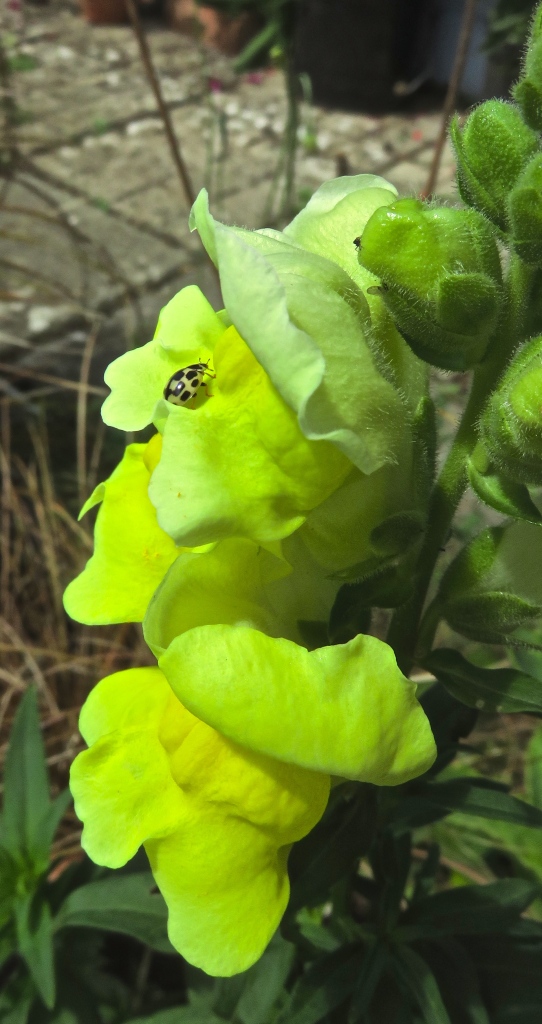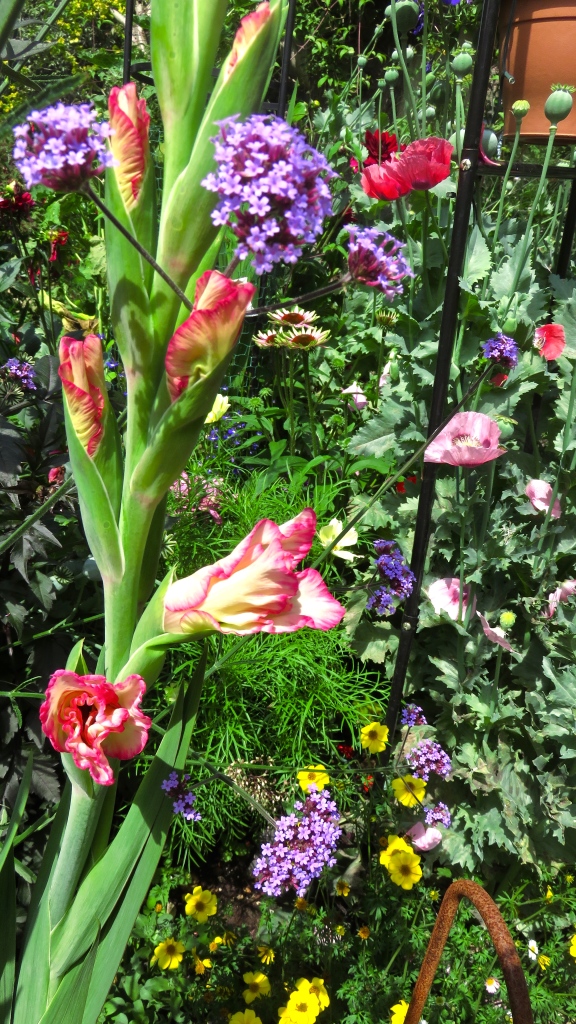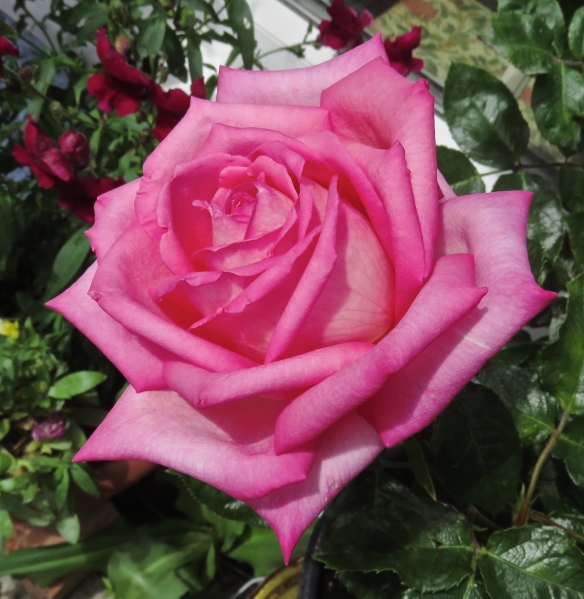This afternoon I tackled sports. Now, please don’t imagine that that means my knee is miraculously fully recovered. I speak of reversion; not of myself, but of the horticultural variety. Variegated plants are generally selected from a sport, or mutation, of a pure green plant. The sport is then propagated by cuttings, grafting or division to retain its features. However, the mutations within these plants are not always stable and can be prone to reverting back to pure green shoots. Reversion is the name given when a cultivar known for a particular leaf shape, colour, or other striking characteristic returns to a different form found in the plant’s parentage. The term is often used to describe a variegated shrub or tree that produces non-variegated shoots.
This euonymus is a case in point. Jackie cut it right back last year, but it continues to revert. I took out the new, much stronger, green stems. This exercise left a few gaps.
It was a much hotter, equally humid, afternoon when I wandered around the garden and down to Roger’s fields and back.
Perhaps it was natural for a minute, black spotted, yellow bug to seek refuge on this snapdragon.
A verbascum towers at the eastern end of the Phantom Path;
in the former compost bed a gladiolus tangoes with a viburnum bonarensis, beyond which
lurk echinaceas.
Our lost label rose proves not to be an Aloha. We still don’t know what it is. Any ideas?
Roger’s hay bales were better lit.
I am not an expert on butterflies, but my research suggests that this very small one that, with its companions, flitted about the footpath hedgerow, tantalising me for some time before it settled, is a Small Skipper.
This evening we dined on rack of pork rib coated with barbecue sauce, and Jackie’s egg fried rice. I started on a fine bottle of Catena malbec 2013 given to me by Shelly and Ron for my birthday.













